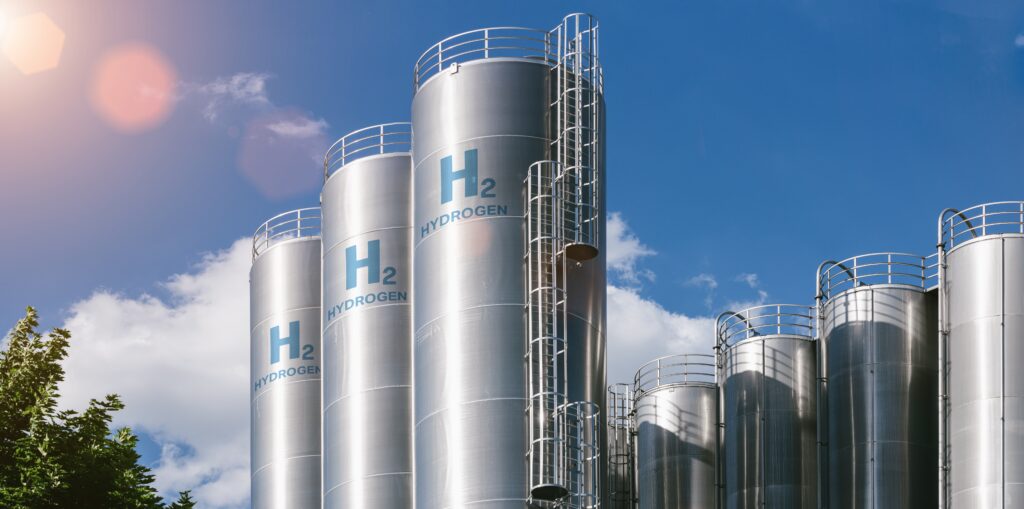The United States and the European Union are taking different approaches to the development of clean hydrogen, a critical technology to decarbonize hard-to-abate sectors, from industry to maritime and aviation, among others. Divergent hydrogen policies can limit the emergence of the competitive, transatlantic marketplace necessary to accelerate the deployment of clean molecules and eventually facilitate regional and global trade. Consequently, US and EU policymakers must coordinate hydrogen rules to the maximum extent possible while ensuring that hydrogen uptake reduces carbon emissions. The following analysis identifies key distinctions between the transatlantic partners’ hydrogen strategies.
STAY CONNECTED
Sign up for PowerPlay, the Atlantic Council’s bimonthly newsletter keeping you up to date on all facets of the energy transition.
Common pillars for clean hydrogen—with different rules
In December 2023, the United States published draft guidance on hydrogen standards, used to determine eligibility for tax credits under the Inflation Reduction Act (IRA). The guidance, called 45V, is built around what is termed the “the three pillars” of hydrogen: temporal matching, additionality, and deliverability. These three general requirements are also tacked in the EU Delegated Act, which defines renewable hydrogen for compliance with EU targets as renewable fuels of non-biological origin (RFNBOs). While in the US framework, tax credits go toward clean hydrogen that is produced using any clean electricity source, including nuclear energy, and in the EU, compliance with EU RFNBO targets requires that hydrogen be generated with renewables only, the three pillars can be generally understood as:
- Temporal matching: These rules aim to ensure hydrogen is produced when clean electricity is available. This means that any amount of electricity used in hydrogen production must be matched with the same amount of zero-carbon electricity produced within a given time period. Shorter time intervals reduce electrolyzer capacity factors, increasing the levelized cost of hydrogen but achieving greater emissions reductions. Temporal matching periods are typically conducted on an hourly, daily, monthly, or annual basis.
- Additionality/incrementality: Rules around this pillar aim to ensure hydrogen production goes hand in hand with new clean electricity generation capacity, making hydrogen producers add renewable electricity to the grid, rather than repurpose existing clean energy already on the grid.
- Deliverability: This set of rules aims to ensure hydrogen is produced using clean electricity in the same region where that electricity is produced. There must be a direct physical interconnection between the clean energy source and the electrolyzers producing green hydrogen.
The chart below features a comparison between the EU and the US approaches to hydrogen across the three pillars, as well as other key areas of clean hydrogen policy. While US regulations are a proposed draft, the EU framework is considered final despite tweaks that may take place during its scheduled revision period in 2028.
Table 1. US and EU approaches to green hydrogen
While certain elements of the US rules might suggest they are stricter than the EU approach, this would be an oversimplification, as each contains elements that could be considered stricter—or looser—than the other in certain areas. While both approaches ultimately mandate hourly temporal correlation and strict additionality rules, the EU does not switch to hourly correlation until 2030—whereas the United States switches in 2028. Also, the EU allows for grandfathering of additionality, which is not permitted in the US proposed guidelines. Nonetheless, the draft US framework allows for the use of subsidized clean electricity for hydrogen production, takes a technology-neutral approach to clean electricity, and accepts energy attribute certificates to comply with hydrogen rules, diverging from the EU framework and allowing for greater flexibility for hydrogen producers. Importantly, differences in approach mean qualifying for the US 45V credit does not automatically qualify a facility as producing EU RFNBO-compliant renewable hydrogen.
Beyond these significant technical variations, US and EU strategies for developing clean hydrogen markets differ in their economic approach: the United States follows a supply-incentive model, while the EU is predominantly relying on a market-pull mechanism. The United States incentivizes production of hydrogen with uncapped tax credits that give lower or higher support depending on emissions thresholds but does not mandate clean molecule uptake. In this sense, it rewards greater wholesale emissions reductions without requiring it. In contrast, the EU employs a demand-side mechanism: regulation imposes the consumption of renewable hydrogen (i.e., 42 percent of hydrogen used in industry must be renewable by 2030), and strictly defines which hydrogen (RFNBOs) is available to meet legally binding targets. This mechanism prioritizes the use, rather than production, of hydrogen, and thus the decarbonization of end users. While the EU has put in place a Hydrogen Bank to support production, support is capped and auction based, whereas the United States’ effort is uncapped and direct. The Hydrogen Bank’s results are yet to be seen.
To maximize clean hydrogen’s potential to contribute to energy security and decarbonization, the EU and the United States will need to balance environmental, economic, and security concerns—and they must coordinate these efforts together. While the two markets have different resource endowments, legal regimes, and more, the EU and the United States should ensure the maximal harmonization and interoperability of hydrogen regulatory frameworks, as this will simplify investment and trade. The two sides should also plan carefully to ensure that their respective approaches to hydrogen development reduce carbon emissions. The next Trade and Technology Council in Belgium is an opportunity for both sides to learn from each other’s best practices and develop common approaches to hydrogen development.
Joseph Webster is a senior fellow at the Atlantic Council Global Energy Center.
Pau Ruiz Guix is Officer on Trade and International Relations at Hydrogen Europe.
This article reflects their own personal opinions.
Related content
Learn more about the Global Energy Center

The Global Energy Center develops and promotes pragmatic and nonpartisan policy solutions designed to advance global energy security, enhance economic opportunity, and accelerate pathways to net-zero emissions.




